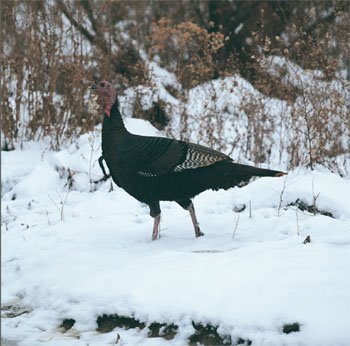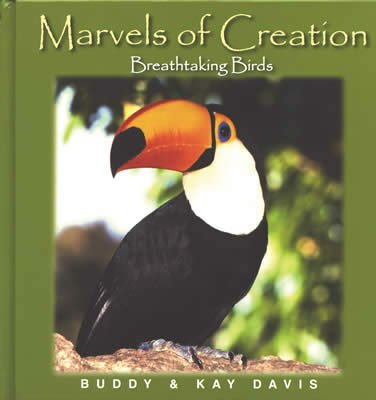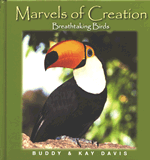Wild Turkey
Photo by mana5280 on Unsplash
The male turkey is larger than the female.

Both sexes of the wild turkey are large, but the male is larger than the female. Mature males are called toms, younger males are called jakes, and the females are called hens. The tom turkey has long, coarse bristles, called a beard, hanging from its breast. When sportsmen hunt wild turkey, usually only males may be taken. One of the ways the male is recognized is by its long beard.
The plumage of the wild turkey is dark on the body with iridescent green and bronze highlights as light is reflected off the feathers. Females are duller in color. The legs are a bright reddish-pink and the males have sharp spears on the inside of their legs like most game birds.
During the spring mating season, toms will show off for potential mates. Fanning their tail feathers wide, they puff up their body plumage, dragging their wings on the ground and making a drumming sound as they strut. Toms are also called gobblers and live up to their name. They gobble in the spring and any loud noise can set them off—a car door slamming, airplanes flying over, or even another bird.
The naked head has very few small hairs and feathers. The male has a “snod” or fleshly carbuncle at the base of its beak, which can lengthen or shorten according to the mood of the bird. The color of the head can also change rapidly to white, purple, blue, red, or anything in between, depending on the bird’s mood. Turkeys have extremely sharp eyesight which pick up the slightest movement, and are therefore very challenging to hunt.
This shy bird lives in open and mixed woodlands moving in small flocks, feeding during the daytime and roosting high in the trees at night. It is a strong flyer but will only fly short distances; upon landing, it will quickly disappear into the forest.
Turkeys eat insects, plants, seeds, nuts, and berries—quite a variety of food. In the wild, its enemies include the owl, fox, raccoon, opossum, and coyote.
As the nesting season approaches, each day the female lays one brown egg in a depression in the ground, continuing until a total of 9 to 14 eggs complete the clutch. She incubates the eggs for approximately 28 days, and after hatching the chicks will leave the nest, staying with the mother. The young are able to fly to roost in about two weeks, but are very vulnerable and half will be killed off by fall. Remarkably, the greatest single threat to the young is rain because they have no protection against getting soaked.
Wild Turkey
Galliformes • Phasianidae • Meleagris gallopauo
Weight: 24 pounds (11 kg)
Length: 40–50 inches (100–125 cm)
Life Span: 8–12 years
Special Design Feature: The turkey’s shy nature and sharp
eyesight enable it to survive by being so cautious that any slight movement or
sound will cause it to flee.
Did You Know? Benjamin Franklin wanted the wild turkey
to be the national bird of the United States because of its courting behavior.
Marvels of Creation: Breathtaking Birds
This spectacular book brings the world of feathered creatures alive in a unique and colorful way.
Browse Kids BookRecommended Resources
- © 2024 Answers in Genesis
- Privacy Policy
- Contact
- About


